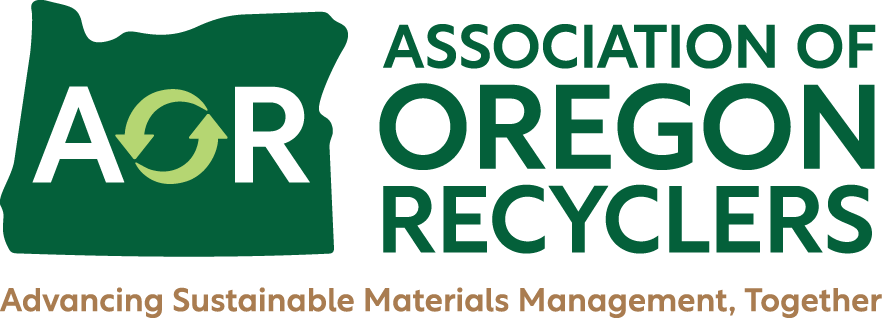Questions from the Sustainable Oregon 2017 Conference Keynote
This year's keynote address at the 2017 Sustainable Oregon Conference at Salishan Spa and Golf Resort on June 7th was jam-packed with information presented by Nina Goodrich, Executive Director of the Sustainable Packaging Coalition.
The session featured Nina discussing the impact of the How2Recycle tool on manufacturing, consumption, processing, and recycling and the potential for reducing contamination. The conversation segued into an engaging conversation between Nina and our panelists, Susan Robinson of Waste Management, and David Allaway of the Oregon DEQ. Together, they provided a broad perspective of the plastics industry and the nitty-gritty practical perspective of MRFs, and also examine the How2Recycle tool from the point of view of lifecycle analysis.
Attendees had lots of great questions that we weren't able to get to during the sesison, but the panelists provided replies to those questions for us to share after the conference.
Questions from AOR Keynote Address
1. David - Referring to the three coffee packages: Do the carbon numbers include the recycling of cans and tubs? How does this change as the recycling rates change?
The numbers I shared in my slide were provided by the US EPA and reflect national average recycling rates for those materials. EPA did not evaluate (or at least did not share) how the results change with different recycling rates. A while back I did a simple back-of-the-envelope calculation which revealed that very high recycling rates for steel cans or plastic tubs would shrink the gap between those packages and the light weighted flexible packaging - but did not close the gap (the flexible packaging still out-performed the rigid containers). However, this was just a simple back-of-the-envelope calculation. Later this year, after we get through a backlog of existing work commitments, we hope to conduct a comparative analysis that evaluates that specific question and is more robust (and better documented), so stay tuned.
2. Nina G. - K-cups: Why not focus on a takeback program separate from mixed recycling programs?
I think the main reason is consumer ease-of-use. I suspect the amount recovered would be very small in a takeback program. Curbside would offer wide access but it is still unknown how well the packages will sort in a MRF. APR is developing a MRF protocol for sorting small packaging.
3. Nina G. and David - Wishful composting:
Nina G. - Given that many composting facility operators do not want compostable packaging products, are companies considering the footprint tradeoffs of making packaging recyclable vs. compostable vs. lightweight. Because compostability is best suited to relatively niche applications like food service-ware, not every package should be the center of a robust recyclable vs. compostable debate.
The packaging that should be considered for compostability really falls into two main categories: either it is food service-ware or it is not recyclable . The carbon story for compostable food service-ware doesn't stop with the package. It has much more to do with the capacity for that package to "bring along" uneaten food: the remains of a sandwich in a compostable clamshell or potato salad stuck on a compostable plate.
In fact, we just released the Value of Compostable Packaging Report, which analyzes the maximum quantities of food waste that compostable packaging can divert at 5 different closed venues. At a festival that used only compostable food service-ware, we determined that compostable packaging could divert a maximum of 19,000 lbs. of food waste, that food waste would produce less than 1,000 lbs. of CO2 in a composting facility and more than 15,000 lbs. of CO2 in a landfill. Many composters won't accept front-of-house food waste if the venue doesn't use exclusively compostable packaging. In this case, the compostable packaging could facilitate a reduction of CO2 emissions 15-fold!
We haven't heard as much discussion around the idea of light-weighting compostable packaging as we have with recyclable packaging. But, because compostable packaging with thinner walls may process more quickly, it could be a win-win for manufacturers looking to decrease carbon and compost manufacturers that want quicker and more reliable processing. A new initiative, the Compost Manufacturers Alliance could assist with this experimentation for products that are already BPI Certified, and give granular feedback to packaging manufacturers on different formulations.
4. David - If the coffee packaging was compostable, how would that affect the carbon values in the three columns?
Well, if the packaging were compostable, it would be a different material, so we’d need to add a fourth row (it wouldn’t affect the existing three rows). The carbon footprint of this alternative material would depend in large part on what the base material is, what it’s made of, and how it’s made. These emissions would occur regarding of whether the compostable material was composted or disposed of. Then at end of life, additional emissions (or emissions reductions) would be a function of how quickly the material degrades in a landfill (if landfilled), and alternatively how it degrades in a compost facility (and whether it produces any compost or simply degrades to CO2 and water). Without knowing any of those variables, I can’t really answer the question, which just goes to show that “compostability” is a huge family of different materials with different characteristics, and we shouldn’t assume that all members of that family behave in the same way or result in the same impacts or benefits.
5. Nina G. - Markets for Recycling. What is SPC doing to help create markets for recycling?
a.) The ASTRX program which is a partnership between The Recycling Partnership and SPC is a systems level project to increase recycling by strengthening each element of the materials supply chain to create reliable and valuable manufacturing feedstock. Reliable manufacturing feedstock is an important input into the creation of new markets.
b.) SPC has initiated an Industry Leadership Committee (ILC) on market creation. The idea is that SPC members along the supply chain can come together to discuss opportunities and challenges to creating new markets.
c.) SPC Goals project - SPC has reviewed the goals of hundreds or companies and put together guidance on how to set sustainable packaging goals. Some of this guidance included market development.
6. Nina G. - How do company brand track where the packaging ends up?
I am not sure if the question is asking about whether the package gets recycled or how it sorts. Brands can do sortation studies in a Municipal Recycling Facility (MRF) to see where packaging flows. It’s hard to choose a “typical MRF”. The Association of Plastic Recyclers is developing a sortation protocol that should help determine how materials will flow in different types of MRF equipment. This will help increase the understanding of consumer instructions in terms of where packaging might need to be flattened or crushed.
7. Nina G. - How does Walmart balance carbon goals with zero waste goals?
Walmart has identified energy, agriculture, waste, packaging, deforestation, and product use and design as the goal areas in which to focus their Scope 3 climate efforts. The carbon goal is over a much broader range of areas than just packaging. Walmart issued a packaging playbook last October that identified packaging sourcing, optimization and recovery as key elements of their sustainable packaging strategy. They are trying to help suppliers understand the tradeoff between different approaches while not compromising the function of the packaging. Product damage is a significant contributor to waste and Walmart wants to insure that optimized packaging doesn’t hurt functionality.
8. David - When was the coffee study conducted? Comment: Energy for steel may be outdated and composite cans have replaced steel cans.
EPA’s analysis was based on a study conducted by Franklin Associates in 2008.


